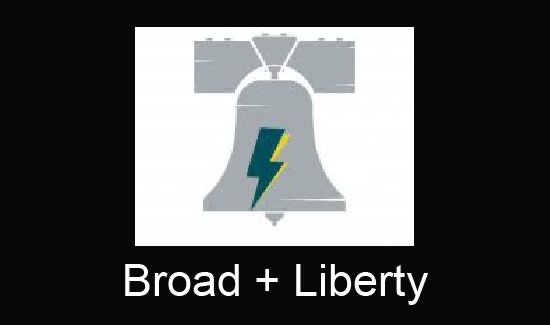Allegheny Institute: Assessment Changes
(April 23, 2012)–Notwithstanding the results of appeals, the total assessed value of real property in Allegheny County is expected to increase 35 percent when new values are certified for 2013. That projection is based on the jump in assessed values from the current level of $64 billion to $86 billion in total assessments resulting from the Supreme Court ordered reassessment. The number of appeals relative to the total number of parcels is small and not all appeals will be successful in getting substantial reductions.
An interesting question is how do the changes in assessments for the County’s 128 municipalities and 43 school districts compare to the 35 percent change in the County? Data available from the Property Assessment Office and reported in newspaper articles allow for arrangement of taxing bodies by the change in assessed value. The table below shows the numbers of municipalities and school districts having changes that are greater than, smaller than or the same as the County’s 35 percent.
Changes in Assessed Value, Taxing Bodies in Allegheny County
% Change in Assessed Value # Municipalities # Districts
36% or > 40 10
35% 6 1
34% or < 82 32
Total 128 43
Among the municipalities, the percentage change in assessed value ranges from a near doubling in Neville Township (96%) to a 5 percent decline in Pitcairn Borough, the only taxing body in the County to see its total assessed value fall from the base year level. Six municipalities have changes at exactly the same 35 percent increase as the County as a whole. The municipality with the highest aggregate assessed value under the base year—Pittsburgh with $13 billion—is expected to rise 59 percent while the municipality with the smallest aggregate assessed value—Haysville, with $3.4 million—is expected to rise 66 percent.
School districts in the County present a different picture. The range of change in assessed value goes from a high of 55 percent in the Pittsburgh School District to a 12 percent increase for the Penn Hills School District, which happens to be one of 13 school districts in the County made up of only one municipality. This means that the aggregate change for the town and the district are identical. The remaining 30 districts have anywhere from two municipalities (10 districts) to the Woodland Hills District that encompasses twelve municipalities. Those multi-municipal districts present wildly different degrees of changes in assessed value for schools and municipalities.
Of utmost importance to taxpayers across the County is how their elected officials will comply with the statutory requirements under Act 71 and Act 1 (see Policy Brief Volume 12, Number 8) and adjust millage rates to avoid exceeding the windfall provisions or, in the case of school districts, the amount allowed by the index calculated for each district by the Department of Education.
We have noted for many years that the change in assessed value for one's property has to be measured against the change in assessed value for the taxing body as a whole to determine what will happen to a property's tax bill. We even argued that comparative information for the County, municipality and school district should have been printed on assessment notices and made clear in public meetings and statements to the media. Two other studies on changes in the Pittsburgh School District earlier in the year showed that for many properties taxes would go down. These were dismissed by County officials while they kept up the constant drumbeat of "reassessments cause tax increases".
Now, in what has to be considered a remarkable departure from the County's historical attitude and behavior, the County Assessment Office has placed a tab on its website that displays the municipal and school district changes in assessed value and allows taxpayers to "Approximate Your 2013 Taxes". There, in plain language, a taxpayer is told that "if the 2013 court-ordered reassessment value for your property is lower than the average for your municipality/school district, you should see a reduction in your municipal/school district property taxes in 2013. If the 2013 court-ordered reassessment value for your property is higher than the average for your municipality/school district, you may see an increase in your municipal/school district property taxes in 2013."
Consider two examples. A taxpayer in Dravosburg sees the municipality's aggregate assessed value grew 86 percent. But, the McKeesport Area School District, of which it is a part, saw assessments rise only 31 percent owing to the much smaller municipal jumps in assessments in McKeesport (28%), White Oak (24%), Versailles (43%) and South Versailles (69%). Obviously, the relatively small increase in McKeesport was instrumental in holding down the school district assessment rise. Still, because the average increase in Dravosburg was 86 percent, it is very likely that many owners in that municipality will see their school taxes rise—as well as their County taxes.
Meanwhile, Etna is in the exact opposite situation from Dravosburg. A taxpayer in Etna sees assessed value for the town increase by 11 percent. However, Etna's three partners in the Shaler School District are Shaler (32%), Millvale (29%), and Reserve (28%) and the overall changes result in a 30 percent increase in value for the Shaler School District. Thus, the bulk of Etna property owners should receive a school property tax cut as well as a County tax cut.
It is a certainty that if the County had been making these easy to understand explanations for the past year and as the County released the new assessments totals for municipalities and districts over the last four months there would have been much less taxpayer angst, confusion and headaches.
It is and has been incumbent on the County to educate and inform the public about what the reassessment will mean for their property. The process should be expanded and publicized continuously. Nonetheless, the person or persons responsible for this tremendous change in the County's attitude and actions deserve credit and thanks.
Eric Montarti, Senior Policy Analyst
Jake Haulk, Ph.D., President
If you wish to support our efforts please consider becoming a donor to the Allegheny Institute.The Allegheny Institute is a 501(c)(3) non-profit organization and all contributions are tax deductible.Please mail your contribution to:
The Allegheny Institute
305 Mt. Lebanon Boulevard
Suite 208
Pittsburgh, PA15234
For more on this topic click here
Link to Allegheny Institute Website
Forward this Brief to a friend
Tel: (412) 440-0079
Fax: (412) 440-0085
Email: [email protected]





